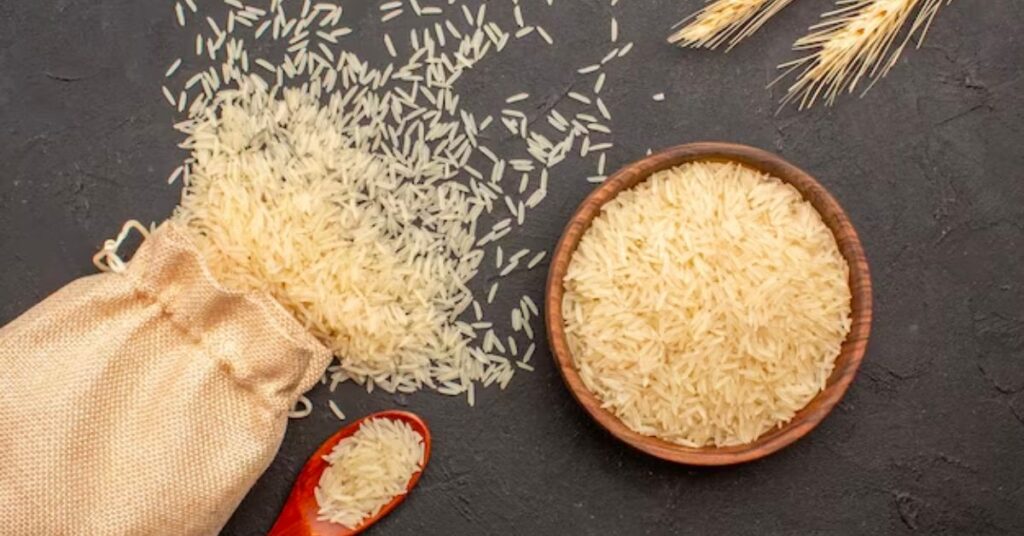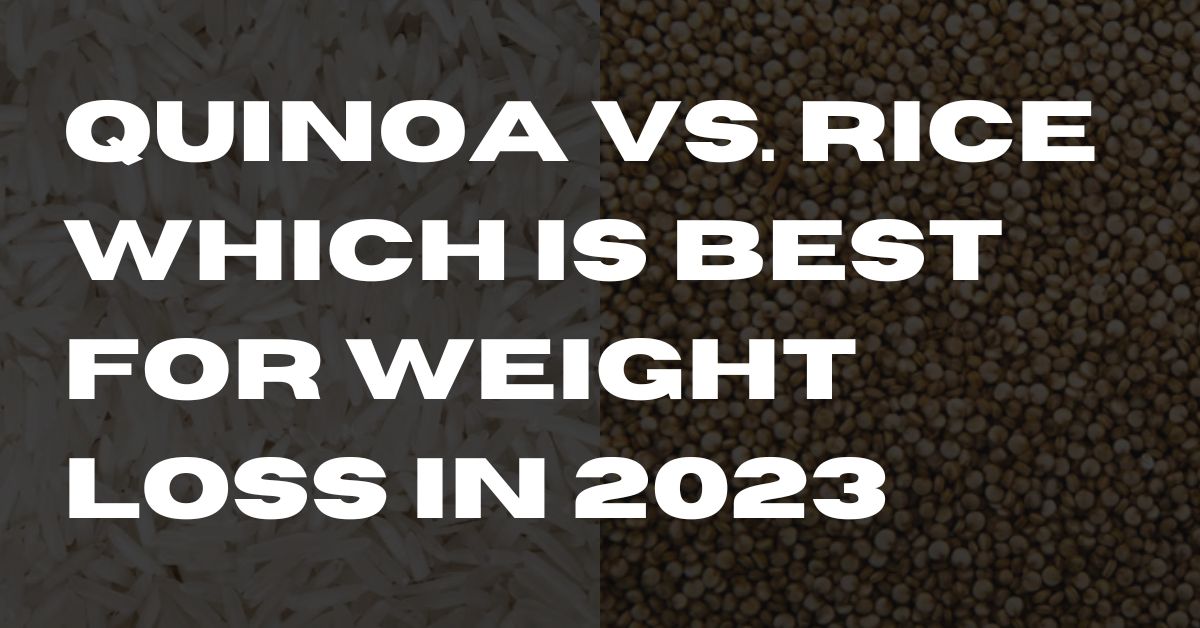Are you prepared to embark on a delectably effective journey toward achieving your weight loss objectives?
The timeless inquiry of “quinoa versus rice” holds the secret to unlocking your potential for a healthier, more vibrant you.
In this captivating exploration, we will plunge into the realm of grains, revealing their distinctive attributes and nutritional advantages.
Uncover which of these culinary companions will emerge as your trusted partner in your mission to shed those excess pounds and thrive.
So, grasp your utensils, for we shall now unveil which grain reigns supreme in the kingdom of weight loss.
Table of Contents
Quinoa: The Nutritional Powerhouse

If you’re on a journey to shed those extra pounds and improve your overall health, quinoa deserves a top spot on your menu.
This tiny grain, often mistaken for a seed, packs a powerful nutritional punch.
Quinoa is not only a complete protein source, providing all essential amino acids, but it’s also loaded with vitamins and minerals, such as magnesium, iron, and potassium.
The research-backed key point here?
Quinoa’s high protein content can help with weight loss by promoting a feeling of fullness and supporting muscle maintenance.
According to a study published in the Journal of the Science of Food and Agriculture, quinoa’s protein-rich composition can contribute to improved satiety, making it easier to manage your calorie intake and, consequently, aiding in weight loss.
Incorporating quinoa into your diet is like having a nutritional superhero by your side on your quest for a healthier you.
Rice: A Staple with Variations

Rice, a global dietary cornerstone, comes in an array of choices, but its place in your weight loss journey might surprise you.
While it’s often seen as a simple carbohydrate, brown rice, in particular, stands out for its nutritional value. Brown rice retains its bran layer, offering a substantial dose of fiber.
The noteworthy research-backed point? The fiber content in brown rice promotes a feeling of fullness and aids in appetite control, potentially supporting weight loss efforts.
A study published in the American Journal of Clinical Nutrition found that increased whole-grain rice consumption, like brown rice, was associated with reduced weight gain over time.
So, when you’re navigating the rice aisle, remember that the right choice can be a valuable addition to your balanced diet and weight management plan.
Quinoa Vs Rice
Calorie Count: The Crucial Factor
Quinoa: In the calorie department, quinoa tips the scale at approximately 120 calories (about 10 minutes of running) per 100 grams (*). While this figure might seem slightly higher when compared to certain rice varieties, it’s vital to emphasize that this difference is relatively marginal.
Rice: Brown rice, often hailed as a healthier alternative among rice choices, provides roughly 111 calories (about 9 minutes of running) per 100 grams (*). This places it just slightly below quinoa concerning calorie content.
However, it’s crucial not to fixate solely on calorie counts when deciding between these grains, as there are other essential aspects to consider.
Fiber: The Satiety Game-Changer
Quinoa: An outstanding feature of quinoa is its impressive fiber content, boasting approximately 2.8 grams of fiber per 100 grams (*). Fiber plays a pivotal role in instilling a sense of fullness and enhancing digestive health.
Rice: Brown rice, while not devoid of fiber, contributes around 1.8 grams of fiber in the same 100-gram serving. While this is commendable, it falls short of quinoa’s fiber richness (*).
Quinoa takes the lead in the fiber department, potentially aiding you in feeling more satisfied and less susceptible to overindulgence.
Protein Power: Quinoa Takes the Lead
Quinoa: In the protein arena, quinoa emerges as the undisputed frontrunner. It boasts an impressive protein content of approximately 4.1 grams per 100 grams (*). This makes it an invaluable choice, especially for individuals aiming to boost their protein intake, which can play a significant role in muscle preservation and appetite regulation.
Rice: Brown rice, while not devoid of protein, offers a more modest 2.6 grams of protein in the same serving size (*).
For those on the lookout for a grain that can assist in achieving their protein goals while striving for weight loss, quinoa shines in this category.
Satiety Stars
Quinoa: The combination of quinoa’s heightened fiber and protein content bestows upon it the status of a satiety superstar (*). The sensation of fullness and contentment is of paramount importance on any weight loss expedition, and quinoa’s nutritional composition significantly contributes to achieving this state.
Rice: Although brown rice contributes some fiber and can play a role in satiety, it may not deliver the same level of satiation as quinoa (*).
If curbing hunger is a priority on your weight loss journey, quinoa should be your grain of choice.
Macronutrients: The Building Blocks of Nutrition
Quinoa: Quinoa is replete with macronutrients, serving as an excellent source of carbohydrates, proteins, and fats (*). These macronutrients form the foundation of your dietary needs and are crucial for energy production, muscle function, and overall well-being.
Rice: Rice, while predominantly a source of carbohydrates, provides a more modest amount of proteins and fats compared to quinoa (*).
Understanding the macronutrient composition can aid in tailoring your diet to meet specific nutritional goals.
Micronutrients: The Winning Edge of Quinoa
Quinoa: Beyond the realm of macronutrients, quinoa’s true strength lies in its micronutrient profile (*). This grain is teeming with essential minerals like magnesium, iron, and potassium, each playing pivotal roles in various bodily functions, encompassing muscle contraction, oxygen transport, and blood pressure regulation.
Rice: Rice, while by no means devoid of nutrients, does not quite measure up to the comprehensive micronutrient spectrum offered by quinoa (*).
If your quest is to find a grain that delivers a holistic package of vitamins and minerals, quinoa unquestionably takes the lead.
Glycemic Index: Rice’s Surprising Twist
Quinoa: Quinoa exhibits a lower glycemic index (GI) in comparison to many rice varieties (*). A lower GI translates to a more gradual impact on blood sugar levels, thereby facilitating steadier energy levels throughout the day.
Rice: The glycemic index of rice is subject to variation based on its type. Brown rice typically boasts a lower GI compared to white rice, although it can still influence blood sugar levels (*).
For individuals vigilant about maintaining stable blood sugar levels, quinoa emerges as the prudent choice.
Practicality and Budget: A Real-Life Perspective
Quinoa: Quinoa earns its merits not only for its nutritional prowess but also for its versatility in the kitchen. It is relatively quick to prepare and can be adapted into various dishes. However, it is noteworthy that quinoa tends to be pricier than rice, a factor that may influence your decision.
Rice: Rice, especially the ubiquitous white rice, is renowned for its practicality and affordability. It is a staple in countless households, cherished for its ease of preparation and ability to complement a wide range of cuisines.
In the real world, your choice between quinoa and rice often hinges on practicality and budget considerations, in addition to nutritional factors.
In the perpetual debate of quinoa vs. rice, both grains undoubtedly bring their unique strengths to the table. Quinoa excels in terms of protein, fiber, and micronutrient content, establishing itself as an exceptional dietary choice. On the other hand, rice, particularly brown rice, offers respectable fiber levels and practicality, all while being gentle on the wallet.
Conclusion
In the epic clash between quinoa and rice, we have delved profoundly into the nutritional arena to decipher which grain emerges triumphantly in the realm of weight loss and overall health.
Quinoa has unequivocally demonstrated its prowess with a superior protein and fiber content, elevating it to the status of a satiety champion that aids in appetite control and promotes muscle maintenance.
Its impressive array of micronutrients and a lower glycemic index further solidify its position as a nutritional powerhouse.
Conversely, rice, particularly the brown variety, offers practicality and wallet-friendliness while still providing respectable levels of dietary fiber.
It remains a versatile pantry staple that can seamlessly integrate into a well-balanced diet.
The decision between these grains ultimately hinges on your individual goals and dietary preferences.
Incorporating both into your meals for diversity is a sensible approach, ensuring that you harness the advantages of each.

